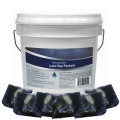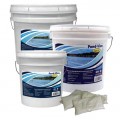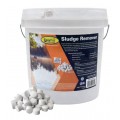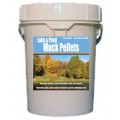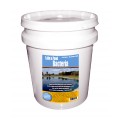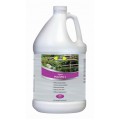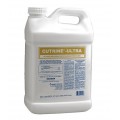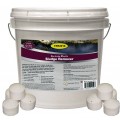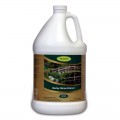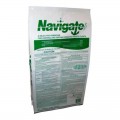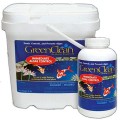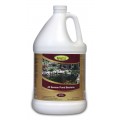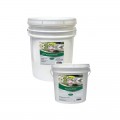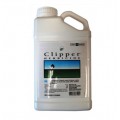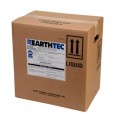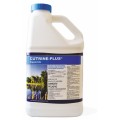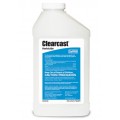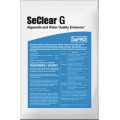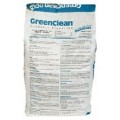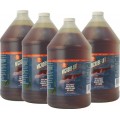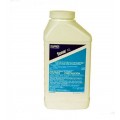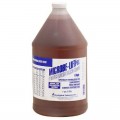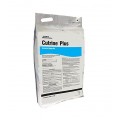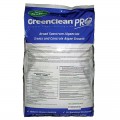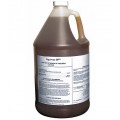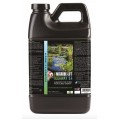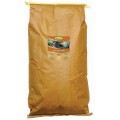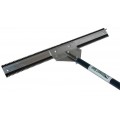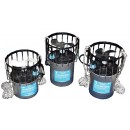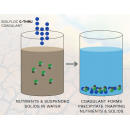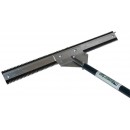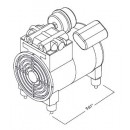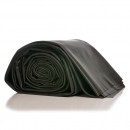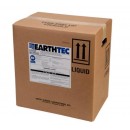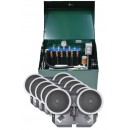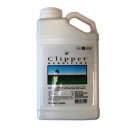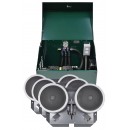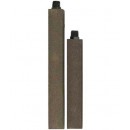Shopping Cart
0 item(s) - $0.00- Pond Sealant
- Aeration Systems
- Air Pumps & Compressors
- Algae Control
- Algaecides & Herbicides
- Bacteria & Clarifiers
- DC Compressors & 12V Pumps
- Diffusers & Airstones
- Dock Bubblers & Deicers
- Dyes & Colorants
- Fountains
- Large Ponds & Lakes
- Muck Removal
- Nozzles & Fountain Heads
- Pond Liner
- Pond Pumps
- Tubing & Accessories
- Water Level Control & Gates
- Water Treatments
- Windmill Aeration
- Commercial & Industrial Supplies
- Solar Aeration
-
Information & Articles
- - Aeration: The Key To Success
- - Air Compressors: Rotary Vane
- - Air Pumps: Linear or Diaphragm
- - Airline & Tubing for Aeration Systems
- - Algae Control
- - Aquatic Plants & Weeds in Ponds
- - Building A Dock Bubbler System
- - Building A Pond: The Basic Steps
- - Calculating Dissolved Oxygen Levels
- - Compost Aeration & Compost Tea
- - Diffusers: The Key To Efficient Aeration
- - Dock Bubblers & Deicers
- - Duckweed Control
- - Fountain For Ponds, Lakes & Small Gardens
- - Grease Trap Bacteria & Enzymes
- - Mosquito Control in Ponds
- - Muck: Removing Sludge & Pond Muck
- - Pond Aeration Systems
- - Pond Dyes: Aesthetics & Growth Control
- - Pond Liners
- - Pond Pumps: Submersible & External
- - Pond Winterization: Prepare Your Pond for Winter
- - Septic Bacteria Treatments
- - Solar Aeration, Solar Pumps & Solar Systems
- - Solar Aerator Parts List
- - Solar DC & 12V Pumps
- - Weeds & Eurasian Milfoil
- - Windmill Aeration & Windmill Pumping
- - Winterization of Ponds and Lakes
- - Beneficial Bacteria: Helping A Pond Naturally
- - Algae: Basics of Pond Algae
- - Oxygen Transfer Rates, SOTR & Pumping Rates of Aeration Systems
- - Pond Weed & Algae Control
- - Questions & Answers
- - Waterfalls: Building a Waterfall
- - Weighted Airhose, Airline & Tubing for Ponds
- - Links to Suppliers & References
- Consultations & Design Assistance
- Books & Guides
- Links & Resources
Pond Weed & Algae Control

| How
Do I Get Rid of the Nuisance Algae in My Pond? Cleaning a pond of
algae.
Algaecides | Bacteria For Ponds | Dyes & Colorants | Pond Muck Pellets This question has often echoed in my head, over the wind-tossed treetops, after one of my on-site pond consultations and is probably one of the most repeated questions any pond expert will hear during the course of a day. Pond owners know that there are two common forms of algae that are bound to show their mucky green faces at one time or another in the life of a pond. Often a pond will suffer bouts with algae many times during a season. While there are chemicals to help knockdown algae my approach is to use natural methods of algae control. This fast-acting product contains several strains of totally-naturally occurring beneficial bacteria which begin instantly breaking down and digesting waste commonly found in pond environments to naturally keep ponds clean, clear and healthy all year long, while utilizing pulverized barley straw to eliminate the need for bulky barley bales, while still providing the water clarifier benefits of barley straw. After treating your pond with any sort of algaecide it is essential to use a natural bacteria to eliminate the dead algae otherwise it begins to accumulate on the pond floor and decomposes which will, with sunlight, release nutrients that cause green smelly water. Using this safe and natural product will eliminate odors, muck and green water. Safe for fish, pets, people and plants!
Aquatic Herbicide 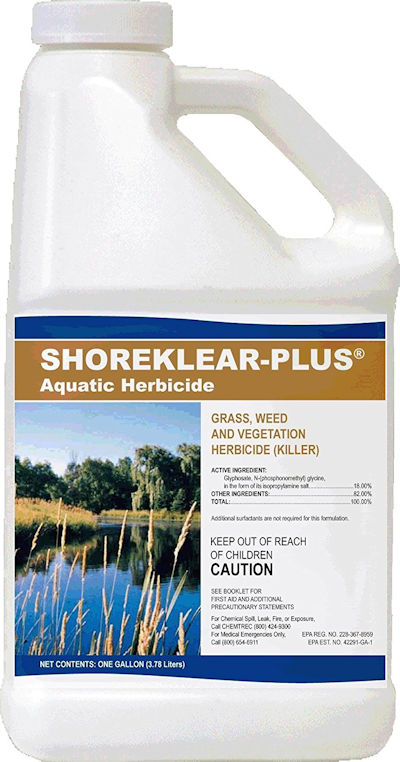 By
results I mean seeing a eutrophic pond that has gone from a decrepit
swamp and a mud infested stinking mess into a vibrant and healthy
ecosystem. I have literally seen lakes reverse from what looked like
an impossible comeback where a bright green, scummy stinky pond returned
to her original, or "Oligotrophic",
state. No "Oligotrophic
State" that is not an unknown State of the Union that we have
rarely visited; the Oligotrophic
state is a technical term describing a healthy pond which according
to the definition are ponds and lakes that are have generally clear
water, are fairly deep in relationship to the diameter of the pond
and free of weeds or large algae blooms. By
results I mean seeing a eutrophic pond that has gone from a decrepit
swamp and a mud infested stinking mess into a vibrant and healthy
ecosystem. I have literally seen lakes reverse from what looked like
an impossible comeback where a bright green, scummy stinky pond returned
to her original, or "Oligotrophic",
state. No "Oligotrophic
State" that is not an unknown State of the Union that we have
rarely visited; the Oligotrophic
state is a technical term describing a healthy pond which according
to the definition are ponds and lakes that are have generally clear
water, are fairly deep in relationship to the diameter of the pond
and free of weeds or large algae blooms. To remove filamentous algae, floating algae, bottom algae or horse hair algae Green water and floating algae are two of the most common pond issues we deal with. Adding natural bacteria to your pond will help reduce the nutrients that cause algae and turn the water green. There are some strong herbicides and chemical algaecides that are required for certain pond weeds and aquatic plants like duckweed or milfoil. For the more common filamentous string algae you can use less harsh treatment of a non-copper granular algaecide. This fast acting algaecide can kill floating algae within 72 hours or less. After the algaecide has killed the algae it can be manually removed if it hasn't sunk to the bottom already. The algae will turn darker and sometimes from green to brown as it is being eradicated so you will see evidence that the algaecide is working. Adding the natural bacteria, either liquid or dry powder, will help clean up the remnants of the algae that have died so they do not just sink and accumulate as another form of nutrient. Without adding a natural bacteria after treating with an algaecide you risk running in circles always adding more and more algaecide. Adding the pond bacteria every two weeks or so will maintain your pond and this should eventually become your only treatment. Having good circulation or aeration in the pond will help as well. In larger ponds you may add 2 to 5 pounds per acre every two weeks during the warm summer months. There are several concentrated bacterial blends available, some with barley straw extract to assist in natural discouragement of algae blooms. Use these two products together in your pond for a quick and natural solution There are natural ways for string algae control that involve a few simply applications so you don't have to toss in three bales of barley straw to get your water clear enough to see the bottom no matter what your neighbor says. If you want a simple step-by-step guide to getting rid of unwanted pond algae then here it is: STEP 1: Algaecide STEP 2: Bacteria Can't get easier than that can it! And if you don't have algae then just go to step 2 and follow the maintenance dosage. Use a combination of of natural algaecide and then a beneficial bacteria to clean up the decayed cells that will be left after the algaecide has destroyed the algae. The recipe we have found to be most effective involves two basic ingredients: First, apply the non-hazardous algae killer and then, 72 hours later, begin treating with natural bacteria to consume the dead algae. WHAT DOES THIS BENEFICIAL BACTERIA DO?
First of all I am often asked about the make-up of this bacteria and w hile most suppliers treat their recipes as if it were the Colonels Secret Recipe for KFC we can say that these organisms have been deemed appropriate and safe for use in ponds and lakes by the United Stated Environmental Protection Agency and the Canadian Environmental Department because of their beneficial and harmless nature. You can expect the following benefits: INCREASED GROWTH AND HEALTH OF FISH - This natural bacteria mixture is comprised of healthful organisms that are natural food for aquatic insects. The bacteria multiplies as it feeds on organic sediment, and insects grow and multiply as they feed on the bacteria. Fish then feed on the insects and grow rapidly as insects are one of the best foods for fish. INCREASED DEPTH - As the bacteria feeds on bottom muck, your pond or lake will deepen, making a better environment for fish, and less opportunity for weeds to grow. Cattails and lilies will not gradually disappear. The beneficial bacteria removes nutrients that many unwanted aquatic weeds are nourished by. Neither cattails nor lilies will gradually disappear by using bacteria, indeed lilies and cattails can provide beauty and add oxygen to a pond and if cattails are a problem as they can be invasive you should do manual removal. Bacteria removes the mucky buildup and this this process is a more economical means of removing organic sediment than dredging and is much more sustainable!. ALGAE & ODOR REDUCTION - Filamentous algae, also known as "pond scum," forms dense hair-like strands that can form thick floating mats. Its growth begins on submerged objects on the pond bottom. As it grows, the algae gives off oxygen that becomes entrapped in the mat of strands. This gives it buoyancy and causes it to rise to the surface where it frequently covers large areas of the pond. Filamentous algae is often a persistent problem because it reproduces by plant fragments, spores and cell division. Treatment with a beneficial bacteria can solve this problem. CLEANER SHORELINE - You will begin to see clean sand or gravel on your shoreline where only muck was present before (if sand or gravel is present at the shoreline under the muck.) CONTENTS IN BENEFICIAL BACTERIA - Specialized, preselected, adapted microorganisms, bio-organic catalysts and microbial growth stimulants on an inert carrier. Included species include, but are not necessarily limited to : Bacillus subtilis, Bacillus licheniformis, Bacillus polymxya, Bacillus circulans, Bacillus amyloliquifaceans. Barley extract is also included in products listed to contain barley straw extracts. Microbe Lift Algae Control Non-Copper Granular Algaecide EPA Registered - CleanGreen - Pro7 Rating (Our Highest) This is a non-hazardous algae killer that is safe for fish, birds and pets once added to the water. CG Granular Algaecide begins working to control algae within 60 seconds of application, with visual results in 24-48 hours. Once you have treated your pond with the required dosage of the algaecide you may notice your algae may appear to get worse! This is, of course, quite a shock to anyone who has purchased a algae control product but it is one of the way that the pesky algae almost wants to have a last laugh with us! As the algae becomes starved from lack of nutrients or begins to suffer the poisonous effects of the granular algaecide then it will often turn dark and float to the surface causing large black mats sometimes of thick dark green algae. Don't worry...this is normal and the pond will clear up. A pond is surely one system where the saying "It will get worse before it gets better" really applies! We've said before patience is a virtue with your pond! After that you have added the algaecide it is time to add a natural safe bacteria to to then devour the dead and decaying algae cells that sink to the bottom. There are many brands of on the market including BactaPUR, Bacterius, PRO Formula Pond Cleaner, Aquaspheres, BarleyBac, BioBac, Nature's Pond Conditioner, Pond Care Pack, AquaClearer Extreme Dry & Liquid, and the list goes on and on. Granted many of our friends from around the world in our travels have had good results with these products and our philosophy is is that if the shirt fits then wear it! We have chosen the best natural pond bacteria product to recommend when we do our on-site consultations. When used in the correct dosages and and when following our guidelines for aeration the results have been 100% successful. 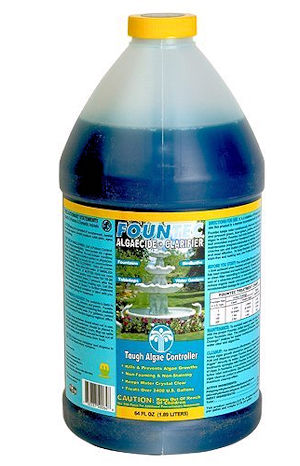 FounTec
Algaecide & Clarifier FounTec
Algaecide & ClarifierFast acting and no chlorine needed Kills and inhibits all types of algae growth in all types of waters Treats over 2400 U.S. Gallons with recommended dosage: one drop per gallon of water per week Keeps Water Crystal Clear and Algae-Free Kills & Prevents Algae Growths Fountec's organic polymers keep fountain and statuary water cleaner, clearer, and algae-free without chlorine and laborious scrubbing. This EPA registered product utilizes a unique control mechanism to kill and inhibit algae without harming the environment. Unaffected by heat, sunlight and evaporation, Fountec also outlasts and outperforms copper, enzyme and quat based products. A small dose of Fountec lasts up to a week or more and is very economical due to its concentrated formula. Fountec is non-hazardous, non-staining and non-foaming. It is safe for birds, plants, and animals but not for fish. Fountec is the most effective product now available for fountain treatment. These days it seems that there is more and more talk of bacteria and friendly cultures and the beneficial strains of harmless single-celled miracle working creatures that can literally save the world! Of course it's great to know ow that our yogurt is enriched with some sort of bacillus that will sit in our guts and cause a blooming rainbow flora within us! Heck, I'm even hearing that toothpaste full of living bacteria is coming and while I may be somewhat open-minded I still don't know if I want to have creepy crawlies on my electric toothbrush! But my point is this; in the last 15 years I've been a professional pond consultant I've seen some truly dramatic results using our friendly ancestors from the Earth! By eliminating chemicals from the equation we can ensure that other aquatic organisms are not harmed in the treatment of unwanted algae. Chemicals are indeed effective at quickly killing algae in ponds and lakes but when chemical agents or algaecides are used we often see damage to beneficial organisms, both flora and fauna, that actually assist in the health and maintenance of a clear and healthy pond. If you are seeking a quick fix chemical solution to aquatic weeds and troublesome algae then it may be best to look elsewhere. Such treatments as copper sulphate are effective but can lead to chemical dependence. Treating with chemicals will often leads to a chemical dependence and this is a vicious cycle of endless chemical applications and damage to the environment. Many pond owners
have experience with two primary algae types that are known to haunt
many lakes, pond, water gardens, koi ponds and dugouts. There are
string algae, also known as filamentous algae, angel hair algae,
or horse tail algae which appear as wispy thin green silken hairs
that can form thick floating mats and drift and clog along the edges
of ponds especially against rocky shoreline structure like rock
walls or bridges. Then there are the varieties of plankton and phytoplankton
algae that cause green pond water, either a pale green that reduces
clarity and forms pond scum on rocks, or a thick pea soup, sometimes
an oily-looking layer of thick almost fluorescent green that looks
utterly sickening. 1 - The Natural Way Natural bacteria for ponds If the pond is small enough just the best way to remove the weeds or plants is to manually remove it day by day, hour after hour, until there is none left. Of course it is really tough to completely eradicate the problem but you can keep it under control just like keeping the dandelions out of the vegetable garden! You need a net with a long handle or a good quality aquatic rake to harvest this pond weed if you want to deal with this problem naturally or you can look into some carp species that will eat aquatic plants. 2 - The Chemical Way Aquatic herbicides and pond weed killers Aquatic algaecides and herbicides are very effective at controlling unwanted invasive pond species. You should understand that such algae problems, well...it's not really an algae but an aquatic weed plant, if they are treated with herbicides can lead to a dependency or resistance and scientists generally agree that chemical selection pressure that is applied applied to aquatic weed populations for a long enough period of time eventually leads to resistance. This means that while the chemical pond weed killer may work quickly and effectively for the first few years, unless you are adding a positive treatment with aeration and natural beneficial bacteria you will just be "chasing the dragon" so to speak!
The string, filamentous algae that is like slowly drifting hairs is often found in stagnant areas of a pond like around the edges where circulation doesn't occur. Ponds with exposed rock shorelines are notorious for becoming warm due to direct sunlight heating the stones which transfer heat to the water. When these stagnant areas become warm and when nutrients are available a slow formation of hair like algae will begin to farm and stick like glue to stones. By reducing circulation and aeration you will reduce the favorable conditions that these algae thrive in so evidence of growth of the filamentous algae should be looked on as a sign that additional circulation or increased aeration would be a good idea. Some backyard ponds and water garden owners prefer to drain their ponds and scrub them down with chlorine bleach or salt mixtures every year to help sterilize the pond. While such cleaning may provide benefits there should be no need to perform such tiresome maintenance operations if a proper ecosystem can be created. Beneficial nature bacteria and barley straw are other ways to assist in the reduction of algae. There are many pond supply websites and stores that sell a variety of products that claim to be strong bacteria or enzymes or natural cultures for clearing ponds and it is best to find a source that can provide references as these sorts of products can be cast in the same light as snake-oil! There can be no denying that there are reputable dealers who can sell a high quality, pathogen free variety of algae busting bacteria but there are also twice as many who sell diluted and homemade bacteria mixtures that are often overpriced and under-effective! When pond water is greenish or that unwelcome pea-soup color it is uninviting for swimming and we cannot see our fish. While not as disturbing as thick mats of algae to have a constant pale green water in the pond can reduce enjoyment of the pond and practically ruin a summer holiday if it continues for over ten days. This green water can be partly the cause of two primary elements required for their growth and propagation: sunlight and nutrients. When we talk about nutrients we are meaning, decaying leaves from the dropping of the Autumn foliage, fish food decomposition, and any sort of phosphate type material from runoff that gets into the water. So we see that reducing these conditions will help maintain clear waters. First by reducing the direct sunlight that hits the pond we can help by stopping the sun's rays from hitting the nutrient rich pond bottom which, especially when low in oxygen, can release algae causing substances. How can you reduce sunlight? Adding aquatic plants like water lilies and hyacinths or by installing a floating islands can provide shade to help cool the water and dramatically reduce the harmful effects of the summer sunlight. Treatments with a professional grade aquatic dye can also radically assist in the demise of phytoplankton. Adding vegetation, floating islands, and treating with aquatic colorant can provide rapid, almost instant aesthetic improvements to a pond and often should be looked on as the first-step, along with aeration, at improving the condition of the pond. With an existing pond the first step is to clean as much muck and organic material from the pond as possible. While this is often done the traditional way of draining and excavation, or in small ponds with nets and shovel; it is also possible to treat with specific bacterial cultures that feed on nutrients in pond muck and reduce the available nutrients in the water column. Of course smaller backyard ponds and water gardens can be easily drained and washed and it is a good idea to skim off leaves and other debris daily on your daily inspection of the pond and it never overfeed your fish by using an automatic fish feeder if required. In both large and small basins that use of beneficial bacteria must be considered as a regular part of your pond care program! These friendly cultures do no harm to natural organisms. There are many misconceptions people carry when they hear the word "bacteria" and while there are bacteria that are unwanted and dangerous such as those that can cause illness in fish skin and gills that can kill fish, the good bacteria that we introduce into a natural living pond can break down toxic ammonia, reduce nitrites, control phosphates and literally digest organic muck! These marvels of nature can reduce the amount of pond maintenance that we need to perform by providing a constant cleaning action on the side, bottoms and even the water and plants of the pond or lake. The beneficial bacteria will basically out-compete the algae for nutrients. If you are adding bacteria and seeing no results you may have a poor culture set or the dosage may not be high enough; I've found it is better not to be cheap and look for cheap bacteria because you really will get what you pay for…that being said…you should not have to spend more than a few hundred dollars for a season's worth of bacteria. Shock-treatments of double or triple the maintenance dosage is sometimes recommended and as in many forms of health-care early prevention is the key to keeping algae under control; start earlier rather than later in the season. Often, like a runaway train, once the momentum builds up the algae will really become incredibly resistant to treatment. Remember that adding an aerator, not just a nozzle splashing water from a submersible pump or a small waterfall but a real bottom mounted diffuser system with air stones, aeration discs or diffuser diffuser line, de-icing hose or bubbler line, you will enhance the effectiveness of your added cultures by up to 30% so don't neglect the fundamentals!
More Basics of Nuisance Algae Control All living aquatic algae are actually primitive plants! The main difference from other aquatic plants is that algae are defined as having no stems, leaves, or having no real root structures as they commonly exist. There are thousands of species but typically they are found either floating on or near the surface or actually attached to other plants, bottom sediments or debris and even to other real plants! While scientifically speaking there is upwards of 10,000 varieties of aquatic algae, they can all be separated in three fundamental categories: attached-erect algae, microscopic algae and filamentous algae. Most pond owners I know can only separate all the species of algae into two different groups: The algae the ruins their pond and the other stuff they don't care about! The microscopic algae that are sometimes referred to as phytoplankton are free-floating, extremely tiny creatures that give pond water a greenish tinge, or, in the case of a full out bloom, a dark opaque green color. Naturally, a balanced pond is alive and so the existence of the proper levels of such algae is beneficial as they can be the primary dissolved oxygen factories that produce life giving oxygen for other organisms and fish in the pond. Sometimes during warm summer days, especially in midsummer when heat and windless days abound, major algae blooms can occur that rise to the surface and can appear as green or or reddish or even yellow scum. When there is a rapid kill-off of these microscopic algae caused by abrupt changes in water temperature for example, the ensuing death can lead to severe depletion of dissolved oxygen levels and cause severe damage or elimination of other species including fish. Keep a watchful eye on the pond and be prepared to react whenever the lovely pale greenish water tinge, the natural healthy state, suddenly changes into a bright pea-soup! This is a warning sign! In most healthy ponds you should be able to see a fairly bright object clearly to a depth of at least two feet and if a secchi-disc or similar homemade device is not visible before a 24 inch depth is reached it could signify that the pond is suffering from or preparing for an algae event. This is when seeking advice on treatments is mandatory, and, as I stated above, is likely to start with treatments of bacteria, dyes and of course the all-important proper aeration device. What are known as attached-erect algae are not as big nor as common a problem in ponds in Canada or the United States but nonetheless, when blooms of these attached-erect species occur it definitely makes life miserable for swimmers and anyone interested in fishing without losing their lures on the thick mats of submerged weeds. This algae is sometimes referred to as muskgrass, stonewort or sometimes even pond weed, although that is actually a misnomer because even though they do resemble an advanced plant with veritable leaf-like structures spaced plant like on a common stem structure. Before starting any treatment targeting these algae it should be positively identified especially if you are considering a chemical treatment. Again, reducing nutrients and increasing circulation while manually removing the algae is the most natural approach to control. The hair like, filamentous type of aquatic pond algae is the ultimate headache causing nuisance for pond owners in almost all areas of the country as this type of algae is extremely tolerant to cool water temperatures and blooms can begin in early Spring, just when the pond has cleared of ice and the pond owner starts to dream of swimming in crystal clear waters so when this messy muck floats to the surface the effect can be absolutely discouraging. The blooms of filamentous algae are fundamentally born in shallow water areas when waters are clear and sunlight can penetrate and reach the nutrient rich soil of the pond bottom. The conditions of light and food cause cells to rapidly grow and multiply and these cells actually clump together in long strands that resemble green hair, or witch hair as some will refer to it. These hairy masses also grow in almost furry clumps on the bottom of the pond and oft
Free Shipping within the USA
The natural, biological way to revive your pond. The natural, biological way to revive your pond Pond-Vive is a proprietary blend of enzymes and beneficial bacteria formulated to help improve water quality and reduce sludge in ponds, lakes and other water bodies...
Starting at:
$165.00
Free Shipping within the USA
Great for spot treating around docks, beaches or partially treating large ponds. Sludge Remover bacteria is designed specifically to remove organic sludge from the bottom of lakes and ponds. Sludge is the result of fish waste, dead algae or plant material, uneate..
Starting at:
$155.00
Free Shipping in the USA
Safely reduce muck and sludge from ponds and lakes of all sizes. Cleans muck from swimming areas, around docks, any shoreline where muck is a problem. These muck pellets sink into the muck and the natural bacteria devour muck reducing the build-up quickly and effecti..
Starting at:
$155.00
Value Pond Bacteria! Each pack includes either 12 lbs. or 25 lbs. of bacteria packaged in half pound water soluble pouches. The bacteria helps break down organic matter on the bottom of the pond, diminish nutrient overload and helps reduce odor to create a clean, clear & healthy pond. The bar..
Starting at:
$185.00
Free Shipping in the USA
Similar formula to Pond-Vive powder, can be used to treat golf course ponds, farm ponds, municipal areas and similar applications • Works to remove ammonia, nitrates, phosphates & sludge
Application rate is one gallon per surface acre weekly for four weeks, ..
Starting at:
$65.00
Free Shipping in the USA.
ATTENTION: This product cannot be shipped to the following states: AK, CA, CT, ID, HI, ME, MA, NH, NJ, NY, RI, VT & WA
Cutrine Ultra under field conditions, is effective in controlling a broad range of algae including Chara, Spirogyra, Cladophora, Vau..
Starting at:
$175.00
Free Shipping in the USA
These 1 ounce blocks are designed for high performance muck and sludge removal in larger ponds. A smaller format muck pellet is available here
Great for spot treating around docks, beaches or partially treating large ponds. This product is a slightly modified ve..
Starting at:
$-1,165.00
Barley Straw Extract is an all-natural liquid formulation derived from a fermentation process using only barley straw.
All natural liquid formula - easier to use than pellets or bales
Keeps water clean and clear
Works faster than straw and is seeded with bacteria to ensure re..
Starting at:
$70.00
Free Shipping in the USA.
ATTENTION: This product cannot be shipped to the following states: AK, CA, CT, ID, HI, ME, MA, NH, NJ, NY, RI, VT & WA
A granular formulation of 2,4-D which is effective on water milfoil, water stargrass, coontail, spatterdock, water lilies, and watershi..
Starting at:
$430.00
These are our favorite granular alagecides because they can be used for algae control in any water feature such as ponds, water gardens, ornamental waterfalls, fountains and birdbaths. This is a non-hazardous algae killer that is safe for fish, birds, plants and pets once added to the pondwater.G..
Starting at:
$75.00
Free Shipping in the USA
The product contains several strains of naturally occurring beneficial bacteria ideal for breaking down and digesting waste commonly found in pond environments to naturally keep ponds clean, clear and healthy all year long, All Season Pond Bacteria contains a proven ..
Starting at:
$70.00
Free Shipping in the USA
A critical step in effective pond management & maintenance, this all natural powder formulation provides a non-chemical alternative to using aluminum sulphate (ALUM), to bind problem causing phosphates in pond water. It will also buffer pH, provide approximately ..
Starting at:
$115.00
Free Shipping in the USA.
ATTENTION: This product cannot be shipped to the following states: AK, CA, CT, ID, HI, ME, MA, NH, NJ, NY, RI, VT & WA
#1 Choice for Duckweed/Watermeal Control
Sold in Pails of 5 pounds dry powder, mix with water to apply.
Cli..
Price:
$425.00
Free Shipping in the USA.
ATTENTION: This product cannot be shipped to the following states: AK, CA, CT, ID, HI, ME, MA, NH, NJ, NY, RI, VT & WA
Dosage rate 0.33 to 5.43 gallons per acre-foot
EarthTec is a proven, reliable and environmentally responsible solution to recurring a..
Starting at:
$155.00
Free Shipping in the USA.
ATTENTION: This product cannot be shipped to the following states: AK, CA, CT, ID, HI, ME, MA, NH, NJ, NY, RI, VT & WA
9% chelated copper algaecide for use in lakes, potable water reservoirs, farm ponds, fish and industrial ponds, fish hatcheries and raceway..
Starting at:
$90.00
Free Shipping in the USA.
ATTENTION: This product cannot be shipped to the following states: AK, CA, CT, ID, HI, ME, MA, NH, NJ, NY, RI, VT & WA
Clearcast Herbicide is an effective and selective treatment solution for the control of floating, emergent, and submersed..
Starting at:
$225.00
Free Shipping in the USA.
ATTENTION: This product cannot be shipped to the following states: AK, CA, CT, ID, HI, ME, MA, NH, NJ, NY, RI, VT & WA
SeClear G Algaecide & Water Quality Enhancer® formula solved that problem by:
Treating the algae presen..
Starting at:
$220.00
Free Shipping in the USA.
ATTENTION: This product cannot be shipped to the following states: AK, CA, CT, ID, HI, ME, MA, NH, NJ, NY, RI, VT & WA
These are our favorite granular alagecides because they can be used for algae control in any water feature such as ponds, water ga..
Starting at:
$125.00
Price cuts available!
Check for lower prices on Amazon.
*As an Amazon affiliate we may recieve payment for purchases made through Amazon.
Free Shipping in the USA
Specially Formulated for Decorative Fish Ponds, Lagoons & Smaller Water Fe..
Starting at:
$80.00
Free Shipping in the USA.
ATTENTION: This product cannot be shipped to the following states: AK, CA, CT, ID, HI, ME, MA, NH, NJ, NY, RI, VT & WA
This 41.7% Fluridone product is excellent for whole pond and lake treatments. A selective systemic aquatic herbicide for management of aqu..
Starting at:
$430.00
Free Shipping in the USA
A blend of microbes that contain specially formulated strains of bacteria manufactured for use by landscape, irrigation & pond professionals.
Price cuts available!
Check for lower prices on Amazon.
..
Starting at:
$80.00
Free Shipping in the USA.
ATTENTION: This product cannot be shipped to the following states: AK, CA, CT, ID, HI, ME, MA, NH, NJ, NY, RI, VT & WA
This is a granular (dry) form of Cutrine® Plus liquid and is used at a rate of approximately 20 to 60 pounds per surface acre for ..
Starting at:
$95.00
Free Shipping in the USA.
ATTENTION: This product cannot be shipped to the following states: AK, CA, CT, ID, HI, ME, MA, NH, NJ, NY, RI, VT & WA
Green Clean PRO® is a non copper based granular algaecide that works quickly to control string algae and other types of pond algae. GreenC..
Starting at:
$225.00
Safe for irrigation, turf and shrubs. This highly concentrated formula, (60% active ingredient) E.P.A. registered algaecide will eliminate most planktonic algae as well as filamentous algae. There is no phytotoxicity after usage so water is safe for irrigation and turf. Helps ensure clear irrigat..
Starting at:
$275.00
Free shipping in the USA
Algaecide For Ponds – Stops Algae Growth
Control string algae!
No more green water with ALGAWAY 5.4 Algaecide!
It stops algae growth in ponds and can be applied to areas that contain fish an..
Starting at:
$110.00
100% natural product made from concentrated barley straw
Safe for use with aquatic life and pets
Fast acting - steady and extended release
Typically apply every six to eight weeks
Fast acting - steady and extended release
Application Rates
For lakes an..
Starting at:
$95.00
Aquatic Weed Cutter - Eradicator
Excellent for controlling lake and pond weeds. Simply skim the AWE weed rake across the water and let it sink. Retrieve with a short push-pull action and drop the weeds on the shore. Its that easy!
Application: Bottom cutting, Max. Width (in.): 28, Material..
Starting at:
$160.00
Showing 1 to 27 of 27 (1 Pages) Selected Products From ThePondReport.com
 The Pond Report Pond Supplies for private pond owners and commercial pond managers. Pond & lake products and treatments for natural pond care and aquatic management Fast and free shipping from our Florida, California & Oklahoma Distribution Centers. ThePondReport.com is a participant in the Amazon Services LLC Associates Program, an affiliate advertising program designed to provide a means for sites to earn advertising fees by advertising and linking to Amazon.com. Read our disclosure policy regarding the affiliations and commercial incentivizations of The Pond Report web site. © 2006 - 2025 | |||||||||||

